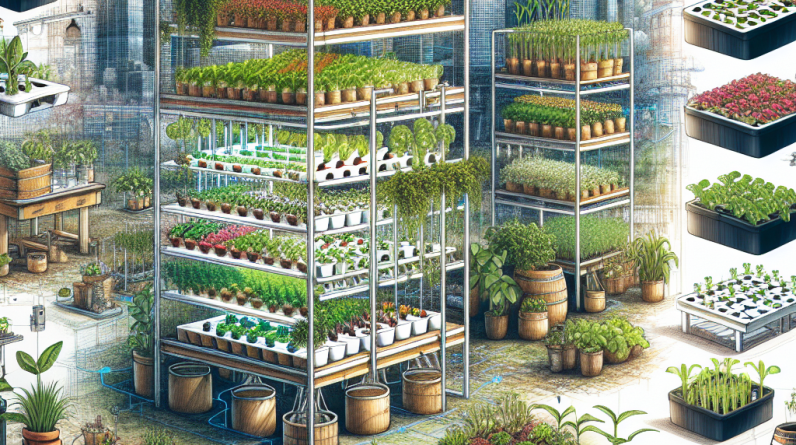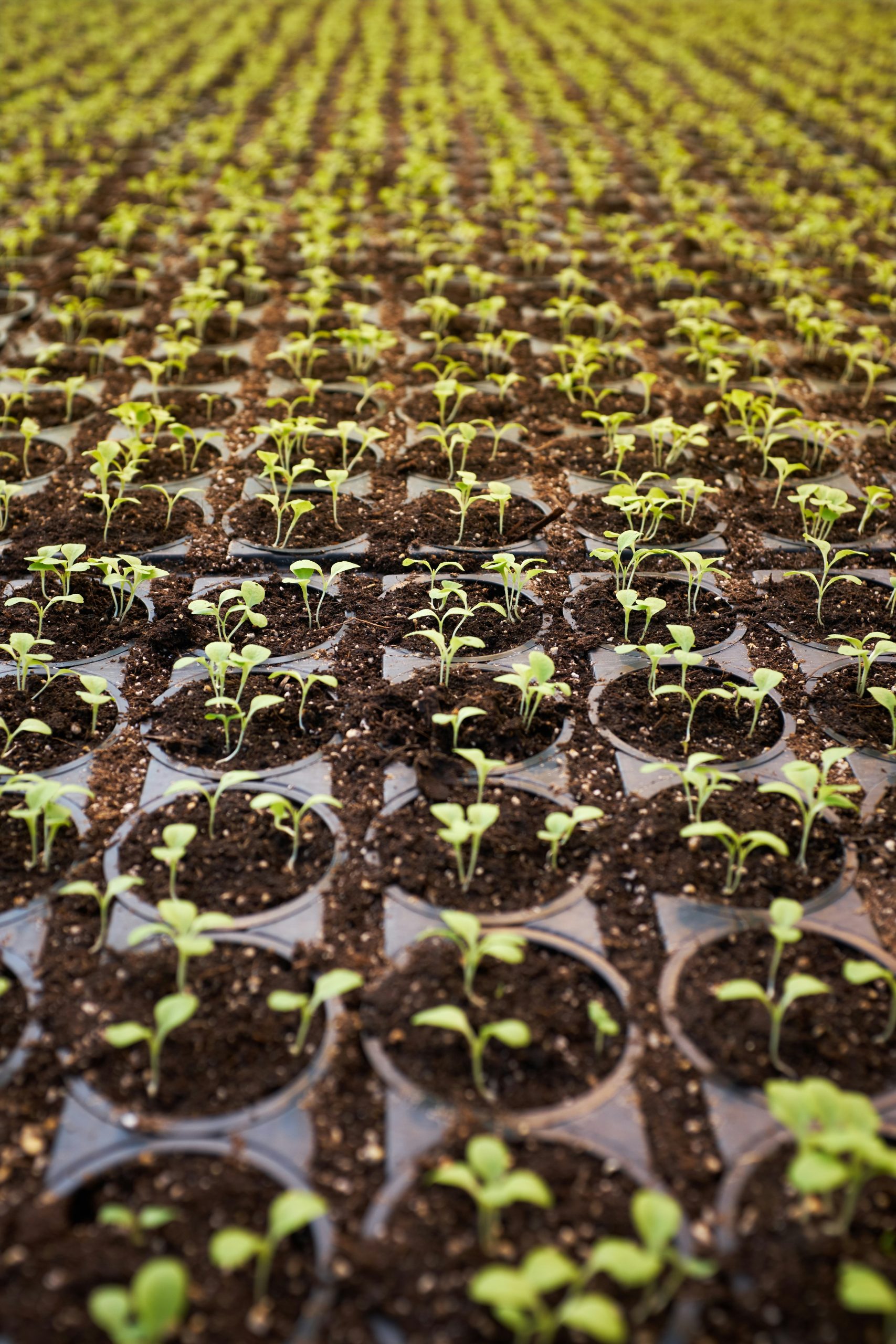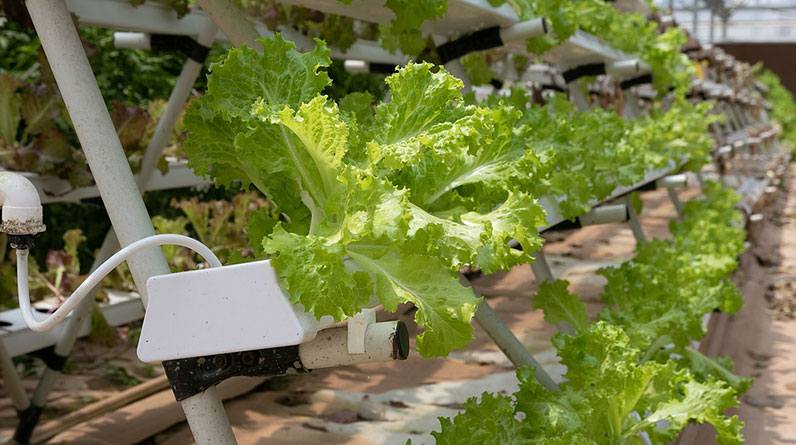
1. Understanding Optimal Water Temperature
Why Temperature Matters for Hydroponics
When I first ventured into hydroponics, I quickly learned that the temperature of the water is crucial. Plants absorb nutrients more efficiently at optimal temperatures. If the water’s too hot or too cold, you can bet your plants won’t be happy campers.
Various species thrive at different temperatures. For instance, leafy greens prefer cooler water, while warm crops like tomatoes enjoy it warmer. Knowing this helps tailor your system to your plants’ needs.
Also, an ideal temperature promotes beneficial microbial activity in the water. In my experience, an active microbial ecosystem can significantly boost plant health and nutrient uptake!
Finding the Right Temperature Range
Generally, a water temperature between 65°F and 75°F is considered ideal. However, it’s crucial to know which specific plants you’re growing, as their preferences can vary.
To get that perfect range, I often use a thermometer designed for aquaponics. It’s super handy! You can find digital models that provide real-time temperature readings to easily keep an eye on things.
Consistency is key. I remember one time when I neglected to check the temperature, and my spinach took a serious hit. Now, I set up alerts to make sure I’m always in the loop!
The Impact of Water Temperature on Nutrient Absorption
Water temperature plays a significant role in how effectively plants can absorb nutrients. I always tell budding growers that if the water’s too cold, the roots can’t uptake nutrients efficiently. This can lead to nutrient deficiencies, which can be frustrating.
If the water gets too hot, it can result in lower dissolved oxygen levels, which also impacts nutrient uptake. Healthy roots thrive in optimally oxygenated water. I utilize air stones to help with aeration, especially during hot summers.
Keep an eye on your plants, too! They’ll tell you if something’s off. Yellowing leaves or stunted growth should signal you to check that water temp right away.
2. Methods for Monitoring Water Temperature
Temperature Monitoring Tools
Investing in the right temperature monitoring tools has completely changed the game for me. I can’t stress enough how invaluable these gadgets have been! Thermometers specifically designed for hydroponics or aquaponics can give you precise readings.
Some systems even offer automated monitoring. I have a smart controller that sends alerts directly to my phone if temperatures fluctuate outside my desired range. Nothing beats instant notifications!
I also recommend having manual thermometers on hand. They’re simple, reliable, and great for troubleshooting if your automated systems are acting wonky.
Regular Temperature Checks
Even with automated tools, I still believe in doing regular manual checks. It only takes a minute, and it keeps me connected to my plants. I make it a habit to check during feeding times.
During particularly extreme temperature weeks—be it summer heat waves or winter cold snaps—I ensure I increase the frequency of my checks. Trust me, it’s worth it to catch any changes before they affect your plants.
When you monitor consistently, you start to notice patterns. You’ll learn how your nutrient solution behaves throughout the day and identify the best times to check.
Using Digital Apps for Temperature Management
There’s a wealth of technology out there now, including apps that can help with temperature monitoring. I’ve started using one that not only tracks water temperature but also lets me log nutrient changes and pH levels all in one place!
These apps can be a game-changer, especially for novice hydroponic gardeners. They often come with alerts and reminders for nutrient changes too, which frees up mental space. I love tech that supports my gardening habits!
The best part? Some apps can sync with physical sensors in your system. That seamless data transfer helps me make informed decisions without the hassle of constant note-taking.
3. Techniques to Maintain Ideal Temperature
Insulating Your Reservoir
When the weather heats up, my first line of defense is to insulate my reservoirs. I wrap mine in insulating material to help keep the water temp stable. It’s a simple hack that makes a noticeable difference!
Reflective blankets or even pool noodles can be effective for this task. The idea is to keep the heat from affecting your reservoir. I learned this lesson the hard way before, when my reservoir overheated.
Additionally, keeping your hydroponic system out of direct sunlight (especially in the summer) helps too. An outdoor setup can be beautiful, but shadier spots are your friends.
Implementing Chillers and Heaters
If you’re dealing with extreme conditions, chilling or heating equipment could be a necessary investment. I didn’t think I’d need a water chiller at first, but suddenly, my plants were wilting under the summer sun.
These chillers can maintain consistent water temperatures, which is crucial for certain crops. On the other hand, if you live in a cooler climate, getting a heater for your water might also be essential.
I’ve seen good results by using technology to manage extremes. It means I can spend less time worrying, and more time enjoying the beautiful results of my hard work!
Shading Techniques in Hot Weather
During those sweltering summer days, I utilize shading techniques. I’ve built temporary canopies to shield my crops from direct sunlight. It’s a balance of keeping your plants cool while ensuring they still get adequate light.
Another DIY trick I’ve picked up is using shade cloth. It’s breathable and can significantly cut down on heat build-up in your hydroponic setup. Plus, it allows for air circulation, which is a must during hot days.
Implementing these methods has made a world of difference. My plants stay cooler, which in turn leads to healthier setups overall. It’s all a part of the fun of experimenting with what works best for your system!
4. Adjusting Water Temperature During Seasonal Changes
Acclimating to Changing Temperatures
As someone who’s been stuck with wilted plants during seasonal changes, I learned how crucial acclimatization is. As temperatures shift, it’s essential to gradually adjust your system. Don’t make major changes all at once!
For instance, when spring turns to summer, I gradually increase the water temperature within a few days rather than just cranking it up. This gradual change helps plants adapt without shocking them.
Similarly, preparing for colder months means slowly decreasing that water temp. My plants thrive best when given a bit of time to adapt to these changes.
Seasonal Equipment Checklist
Adapting for seasons also means keeping a checklist. As summer approaches, I make sure my chillers are functioning, and in the fall, I give my heaters a thorough check-up.
Busting out that seasonal checklist ensures I’m always prepared for shifts in temperature. Little did I know how important routine maintenance would be until I faced unexpected heating issues!
It might seem tedious, but I like to think of it as a cozy ritual to get my system ready for what lies ahead. It’s part of the gardening journey, right?
Adjusting Plant Varieties with the Seasons
In my experience, sometimes changing the plants I grow can also help with seasonal temperature management. For instance, I switch to heat-resistant varieties in the summer, enjoying varieties like basil and peppers that thrive under warmer conditions.
When winter rolls in, I typically opt for cold-tolerant crops, like kale or certain herbs. This strategy has made my hydroponic gardening so much smoother throughout the year, and my plants are healthier for it!
When you pick varieties that fit the season, your overall approach to temperature management becomes far simpler. Plus, there’s something incredibly rewarding about growing seasonal produce!
5. Troubleshooting Temperature Issues in Hydroponics
Identifying Temperature Problems
When things start going awry in your hydroponic system, temperature might be at fault. I’ve seen firsthand how plants display distress signs when the temperature isn’t right. For instance, drooping leaves or slow growth can signal you need to check that water temp!
Sometimes, it’s not just about high or low water temperatures but fluctuations in temp as well. Sudden changes can stress plants. I’ve found that stable conditions keep my green babies much happier.
If I notice issues, my first move is to monitor closely and then adjust one thing at a time instead of making multiple changes at once. It makes troubleshooting easier!
Implementing Quick Fixes
When I discover my plants are suffering due to water temperature, I’ve learned to have a few quick fixes on hand. A bag of ice can help cool down water quickly on a hot day, while a heating pad might just do the trick during chilly nights.
I don’t recommend drastic changes, but sometimes, a temporary fix can make a big difference in plant health. A little creativity can go a long way! Just make sure it’s a short-term solution.
And hey, I’ve been known to move my setup around based on weather forecasts. If rain is coming, I might relocate my system to a warmer spot for a few days. Flexibility is key!
Creating a Long-term Strategy
After battling temperature issues a few times, I decided I needed a long-term strategy. This includes installing reliable heating and cooling systems that align with my types of plants.
Investing in a reliable chiller and heater has saved me from many stressful growing seasons. I rarely face temperature shocks now, giving my plants a better environment to flourish.
Regular maintenance and awareness of the forecast help keep things running smoothly. Getting involved in the community and sharing experiences has been an invaluable resource, too!
FAQ
1. What is the ideal water temperature for hydroponic plants?
The general ideal range is between 65°F and 75°F, but it can vary based on the type of plants you are growing.
2. How do I monitor my hydroponic water temperature?
You can use specialized thermometers or digital apps that track temperatures and notify you of fluctuations. Manual checks are also helpful!
3. What are the signs that my plants are suffering from temperature issues?
Signs include drooping leaves, yellowing, stunted growth, or wilting. Keep an eye out for these symptoms to catch temperature problems early!
4. Can I use ice or heating pads to adjust water temperature?
Yes! Ice can cool down hot water quickly, while a heating pad can provide warmth. Just remember these are short-term fixes!
5. How can seasonal changes affect my hydroponic system?
Seasonal changes can lead to temperature fluctuations that may stress plants. Adjusting your system or plant varieties seasonally can help manage these changes effectively.







